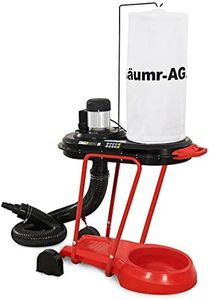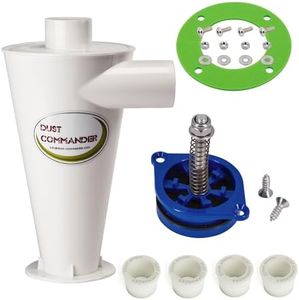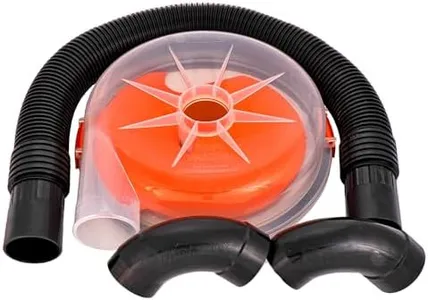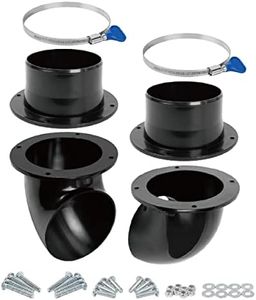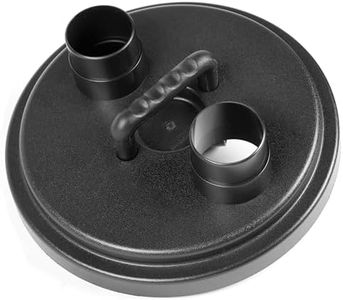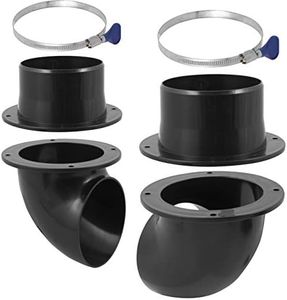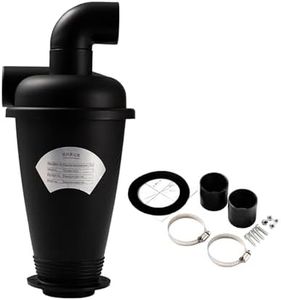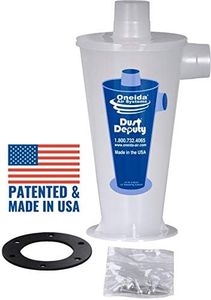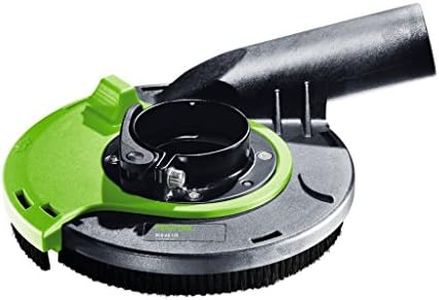We Use CookiesWe use cookies to enhance the security, performance,
functionality and for analytical and promotional activities. By continuing to browse this site you
are agreeing to our privacy policy
10 Best Cyclone Dust Collectors
From leading brands and best sellers available on the web.Buying Guide for the Best Cyclone Dust Collectors
Choosing the right cyclone dust collector can make a major difference in the cleanliness, safety, and efficiency of your workshop or industrial space. Cyclone dust collectors separate dust and debris from the air using centrifugal force, which protects your tools, keeps the air cleaner, and helps maintain a healthy working environment. To find the best fit for your needs, it’s important to understand the main features and specs that influence how well a dust collector will work for your specific space, equipment, and typical projects.Airflow (CFM)Airflow, measured in Cubic Feet per Minute (CFM), indicates how much air the dust collector can move. Higher CFM values mean the system can handle more dust and debris, especially from larger machines or multiple tools at once. For small workshops with a few machines, lower CFM values are usually sufficient, while larger spaces or heavy-duty use demand higher airflow. Consider the size and number of machines you need to connect, as well as the length of ductwork, since longer or more complex setups usually need more CFM for effective dust capture.
Filter Efficiency (Micron Rating)Filter efficiency tells you how small the particles are that the dust collector can trap, usually shown in microns. A smaller micron rating means finer particles are filtered out, which is important for keeping the air clean and protecting lung health. For general woodworking, a standard filter is often enough, but if you work with very fine dust or want to minimize exposure to harmful particles, choose filters with lower micron numbers (such as 1 micron or even sub-micron HEPA filters).
Collection Drum/Bag CapacityThe capacity of the dust collection container (drum or bag) affects how often you need to empty it. Small shops with occasional use can get by with lower capacity, while high-volume operations benefit from larger drums or bags, minimizing interruptions for disposal. Think about your average workload and how much space you have for storage and moving containers when picking the right capacity.
Motor Power (HP)Motor power, measured in horsepower (HP), impacts how well your cyclone can keep up with heavy dust loads and longer ductwork. Lower horsepower is fine for lighter, occasional use with a few small machines, but frequent or industrial-level use with bigger tools usually calls for more powerful motors. Match the motor size to your shop’s dust-making potential and how many tools you might run simultaneously.
Noise LevelNoise level tells you how loud the dust collector is when running. Measured in decibels (dB), this is important for comfort and health, especially in small or shared spaces. If you’ll be using your cyclone for long periods or want a quieter environment, look for designs with lower noise ratings or features like insulated housings to mute the sound.
Portability and FootprintPortability and footprint refer to how easily you can move the collector around and how much floor space it occupies. If your shop is tight on space or you need the dust collector to serve multiple stations, pay attention to models with wheels or compact designs. Permanent installations can handle larger, stationary systems, but if flexibility is needed, choose a model that’s easy to relocate.
Ease of MaintenanceEase of maintenance includes how simple it is to empty the drum, change filters, and perform routine tasks. Some cyclone dust collectors have easy-release latches, clear collection windows, or tool-free filter access. If regular maintenance seems like a hassle, look for these user-friendly features to save time and effort.
